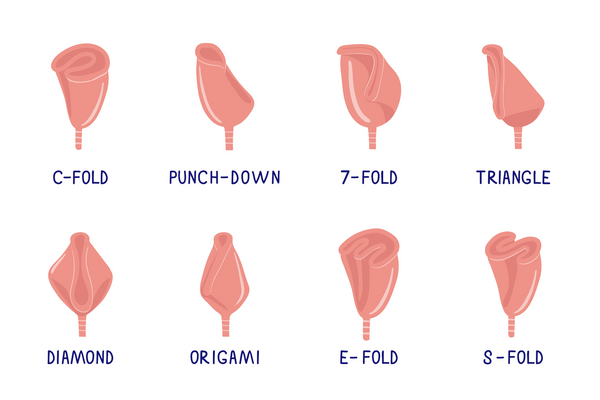Disposable menstrual products like tampons and pads can be such a headache. Luckily, there are alternatives like Leakproof Underwear and menstrual cups that help keep your flow sustainable, eco-friendly and low maintenance. If you’ve been wanting to try a menstrual cup for a while, but are a bit nervous— we’re here to help. Read on to learn everything you need to know about this zero-waste option!
What is a menstrual cup?
A menstrual cup is a reusable period product. There are a ton of different brands and shapes to choose from, but ultimately they’re all small, flexible cups made of medical-grade silicone, rubber, latex or elastomer. This means that they’re a lot more body safe than tampons, and the risk of issues like Toxic Shock Syndrome are basically non-existent.
When inserted into your vagina, cups typically hold more blood than disposable products like tampons or pads. Depending on your flow, you can wear a cup for up to 12 hours.

How to use a menstrual cup
Before you invest in a menstrual cup, do your research! Most brands sell different sized versions that are made for different bodies.
The general rule of thumb is simple though: smaller cups are generally recommended for people who are younger than 30 years old, or who haven’t given birth vaginally. Alternatively, larger sizes are made for people over 30, who have given birth, or have super heavy periods. We recommend checking with your gynaecologist if you’re not sure what brand or shape is right for you.
Check the packaging for specific cup instructions, but most require you to boil your brand new cup in a pot of water for 10-20 minutes to sterilize before use.
How to put in your menstrual cup
It might feel intimidating the first time, and that’s ok! Practice makes perfect. But if you can put in a tampon, you got this.
- Wash your hands thoroughly.
- If you need to, apply water or a water-based lube to the rim of the cup.
- Tightly fold the menstrual cup in half, holding it in one hand with the rim facing up. This is called a C-Fold, but there are other ways to fold the cup too! The rule here is, whatever works the best for you.
- Relax, breathe and insert the cup, rim up, into your vagina— just like you would a tampon without an applicator. It should sit a few inches below your cervix.
- Once the cup is in your vagina, rotate it. It will spring open to create an airtight seal that stops leaks.

You’ll know you did it correctly if you can’t feel it. Do some squats, jump around, wiggle about— make sure that you’re able to do all your everyday activities with the cup firmly in place. While you get the hang of your menstrual cup, we recommend pairing them with Leakproof Underwear to protect against any newbie leaks!
When to take your menstrual cup out
You can wear a menstrual cup for 6 to 12 hours, depending on your flow. Cups are great because this means you can use a cup for overnight protection. You should always remove your menstrual cup by the 12 hour mark.
How to take your menstrual cup out
You did it! Now it’s time to remove your menstrual cup.
- Wash your hands.
- Place your index finger and thumb into your vagina. Gently pull the stem until you can touch the base of the cup.
- Pinch the base to release the seal and pull down to remove the cup. Bam, nice work.
- Once it’s out, just empty the cup into the sink or toilet.
Cleaning your cup during your cycle
After emptying your cup, rinse it out with clean water and use a fragrance-free, oil-free, mild soap to give it a quick clean. Then you’re all good to immediately reinsert.
Sterilizing your cup after your cycle
Once your period is finished, you’ll have to sterilize your cup again. It’s super easy. All you have to do is heat up a small pot of water on the stove, wait for it to boil and drop your cup in. Let it boil for about 10 minutes— this will remove any bacteria, discoloration or odors. Once your cup is cooked (sorry, we mean sterilized), remove your cup, let it dry, and store it away from your next cycle.
#StopTrashingYourPeriod
Knix challenges YOU to go your entire cycle without using a single disposable plastic product. How? Use a mixture of Leakproof Underwear, Super Leakproof Underwear, Dream Shorts and your menstrual cup, if needed! Let us know how it goes over on @knixwear!

Have a teen or tween in your life who’s looking to make a switch for the better too? KT by Knix has you covered with Leakproof undies made for teens!
—
We hope you found this post informative — but remember: we’re not doctors and this post is not medical advice! While all posts are fact-checked and well researched, we always recommend you chat with your doctor about any questions or concerns you might have regarding a medical condition. We’re here to support and educate, but never with the aim of disregarding professional medical advice you’ve been given. Phew, now that that’s out of the way, you can go on living unapologetically free.